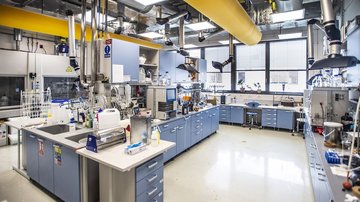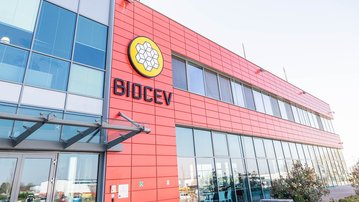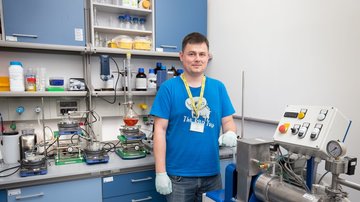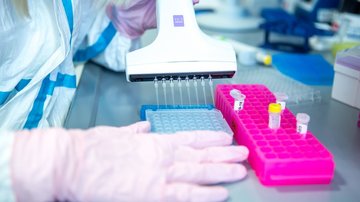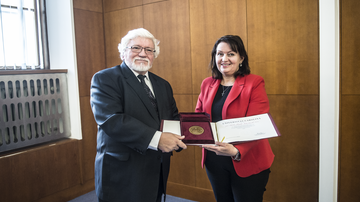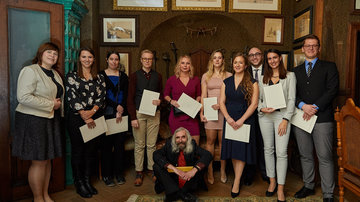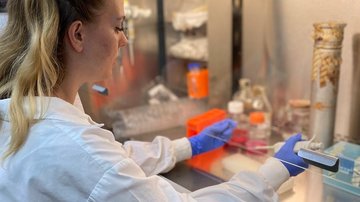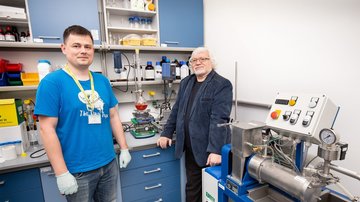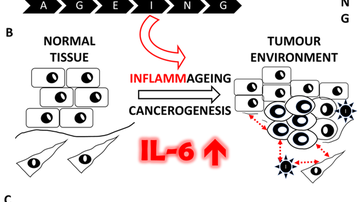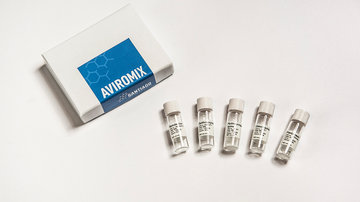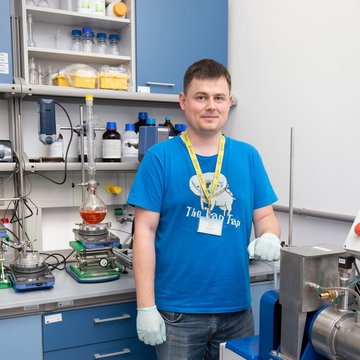
Laboratory of Medicinal Chemistry
Nanobots: Invisible Doctors
They can reach places no other technology can because they are as small as viruses. They can perform eye surgery, purify water and researchers are now preparing them to treat cancer. Nanobots have a big future ahead of them.
If you had the chance to set your abilities in your brain, what would you choose? Better memory? Concentration? Balance and body posture? Get rid of a speech impediment? You could simply select the number of nanobots you need in an app, include a drug in their arsenal and send them to your brain using artificial intelligence. And you would never have a problem remembering things such as how to spell some words. And maybe, someday, stores will sell “math in a spray”, too. You would simply squirt thousands of nanobots into your mouth and they would take care of the rest. It may sound like science fiction to you, but the time is coming when nanobots will invade our lives.
They may be so small that we cannot see them with the naked eye, but the number of options that they offer is unimaginable. Great hopes are being put in them today, mainly in medicine. They could help with surgeries and cancer treatment and they could clean clogged blood vessels in the body. They could replace the traditional way of administering drugs, serving as drug carriers and transporting them to places where physicians today have to go through complex surgeries. For example, cancer would not have to be treated with demanding chemotherapy. However, to do that, the nanobots have to be small, fast, strong and reliable enough. Therefore, researchers around the world are trying to figure out possible ways how to teach nanobots to move throughout the body, to hear, to listen – to think.
Nanotaxi in the human body
In the Czech Republic, nanobots are being researched at the Biotechnology and Biomedical Centre of the Czech Academy of Sciences and Charles University in Vestec (BIOCEV). Researchers at BIOCEV are developing a miniature helper that would be able to safely deliver a load of drugs to a tumour, for example. These drugs must be unloaded at a precise location where they would destroy cancer cells but not damage healthy ones. Miniature robots are very complex machines, and experts are trying to overcome all obstacles they may encounter during their challenging journey through the human body. Some work autonomously, in other words independently. Nanoparticles can move through the bloodstream, tissues and blood vessels based on a concentration gradient. “You can imagine it working like a hose. One end of it is located in a strong sodium chloride solution and the other in a barrel of water. Some parts like to gravitate towards the sodium chloride solution, while others are more attracted to water,” explains Milan Jakubek from BIOCEV.
Nanobots can also be controlled by temperature, lasers and magnets. They system works like a game where you have to use a magnet to guide a ball into a hole. They can also respond to the specific conditions that are predominant in a tumour. A higher pH level is needed in infected tissues than in healthy tissues to force them to unload the drug. Researchers plan to make nanobots from metal nanoparticles that will be modified in various ways, such as with silica. They want to incorporate drugs inside or on the surface based on photosynthesizers (responsible in the body for skin colour, for example) and antioxidants. “When irradiated with a laser, photosynthesizers can produce reactive oxygen elements that are corrosive, such as peroxide. When I say it very simply, they can burn out damaged cells,” Milan Jakubek describes what is actually a very complex and complicated process.
In 1959, famous physicist Richard Feynman predicted the possibility of manipulating individual atoms to build molecule-sized machines. Many shook their heads and considered him a fantasist, not believing him. However, fifteen years later, the new field of nanotechnology was born and in 2016, Jean-Pierre Sauvage, Fraser Stoddart and Bernard Feringa were awarded the Nobel Prize in Chemistry for the development of nanomachines. The photo shows Milan Jakubek (left) and Professor Pavel Martásek, Scientific Director of BIOCEV.
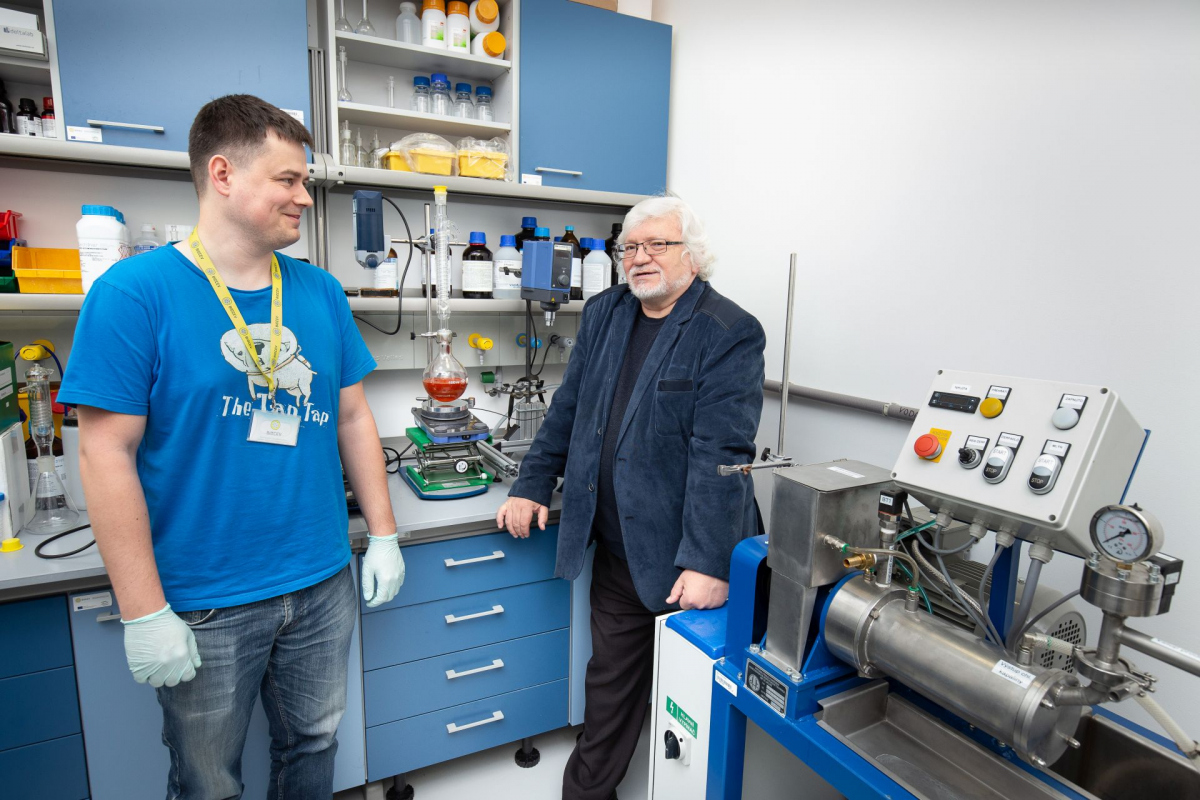
Random obstacles
Czech researchers have to deal with physical phenomena such as Brownian motion. It randomly moves microscopic particles in a liquid or gaseous medium and prevents the nanobots from “swimming” in the bloodstream to their target. They must also address the question of how many nanobots are needed deliver enough drugs to a tumour. They are so small that thousands of them will probably be needed. But how can we keep track of such a tiny crowd in the body and eventually help these particles get out? Researchers are experimenting with biodegradable materials that would break down and be expelled by the body once the task is completed.
In the future, Czech researchers would like to involve artificial intelligence in the navigation of nanobots. It could serve as their brain and help them achieve their goal. Various pieces of information could then be extracted from the body to detect and predict problems. However, ten to twenty years might pass before nanobots become real helpers for doctors and patients and you see them in practice. Scientists have been developing nanobots for the last two decades. The greatest success they have achieved is with nanobots that can fix the eye — they basically work like a scalpel. Today, experts are already using them experimentally to repair a sensitive organ in which no major surgical intervention is possible. They are working hard to verify that they are safe, able to work accurately and gently. It will also take a few years before physicians are allowed to use them routinely in their operating theatres.
A hacked brain
We will be hearing more and more about nanobots. However, it is necessary to remain alert. Nanobots controlled by artificial intelligence could one day connect us to a worldwide computer network. Not only would they be able to improve our memory, but through a database, we would be able to choose from other people’s feelings and experiences. Do you want to feel like someone who just won the Olympics? It sounds tempting, but on the other hand, you certainly do not want your brain to be hacked. Humanity would have to solve many ethical issues and set safe rules for robotics. Experts have been working on them for several years.
There is still a lot that we have to learn nanobots. What is certain is that in the future they will be invisible helpers in many fields: from biology, where they can carry molecules and proteins, to physics, astronomy, archaeology and the environment. They can help construct new smart materials, new types of batteries, sensors and artificial organs. They can already clean water and surfaces and one day they may be able to help avert an ecological disaster. Thanks to them, medicine might one day get rid of complex and painful surgeries and nanobots could prolong our lives. And who knows, maybe one day they will do something that we would consider a miracle today.
Will nanotechnology cause more social change than the Industrial Revolution in the 19th century?
Source: Czech Academy of Sciences / Magazine A Ω / Science for Everybody 2/2022
Photo: Charles University (FORUM)





